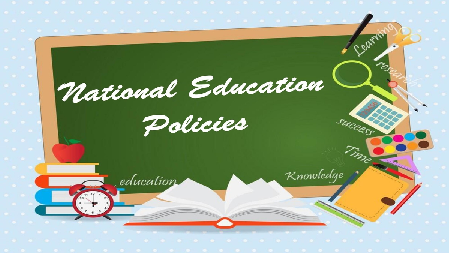This comprehensive article traces the evolution of education policy in Pakistan, starting from the colonial era to the present day. It examines the influences of British colonial rule, post-independence initiatives, political transitions, socio-economic factors, and international trends on education policymaking in Pakistan. By exploring this historical trajectory, we gain insights into the challenges, achievements, and key milestones in Pakistan’s educational journey, highlighting the complexities and nuances that have shaped its education policies over time.
Keywords: Pakistan, education policy, colonial era, post-independence, socio-economic factors, political transitions
- Introduction 1.1 Significance of Education Policy 1.2 Objectives of the Article
- Colonial Legacy: Education Policy under British Rule 2.1 Introduction of Western Education System 2.2 Establishment of Educational Institutions 2.3 Emphasis on English Language Education 2.4 Differential Treatment Based on Class and Gender 2.5 Impact on Socio-Economic Landscape
- Post-Independence Era: Education Policy in Early Pakistan 3.1 Formation of Pakistan’s Education System 3.2 Integration of Diverse Educational Systems 3.3 Development of National Curriculum and Textbooks 3.4 Expansion of Educational Infrastructure 3.5 Challenges and Continuities from the Colonial Period
- Education Policy during Political Transitions 4.1 Ayub Khan Era: Modernization and Technological Advancement 4.2 Bhutto Regime: Socialism and Nationalization 4.3 Zia-ul-Haq Era: Islamization and Religious Education 4.4 Musharraf’s Reforms: Privatization and Marketization 4.5 Political Instability and Policy Discontinuities
- Socio-Economic Factors and Education Policy 5.1 Impact of Poverty and Inequality 5.2 Gender Disparities in Education 5.3 Rural-Urban Divide in Access to Education 5.4 Quality of Education and Learning Outcomes 5.5 Role of International Aid and Development Agencies
- Educational Reforms in the 21st Century 6.1 National Education Policy 2009 6.2 Challenges in Implementation and Monitoring 6.3 National Education Policy 2017: Vision 2030 6.4 Emphasis on Inclusive Education and Quality Enhancement 6.5 Innovations in Education Technology and Digital Learning
- Impact of Global Trends on Education Policy 7.1 Influence of Globalization on Education Systems 7.2 Shift towards Competency-Based Education 7.3 Integration of Sustainable Development Goals (SDGs) 7.4 Role of International Benchmarks and Assessments 7.5 Cross-Border Collaboration and Knowledge Exchange
- Challenges and Opportunities in Current Education Policy 8.1 Addressing Quality and Equity in Education 8.2 Bridging the Digital Divide 8.3 Enhancing Teacher Training and Professional Development 8.4 Strengthening Curriculum Relevance and Innovation 8.5 Promoting Inclusive Education and Social Cohesion
- Future Directions for Education Policy in Pakistan 9.1 Importance of Long-Term Planning and Vision 9.2 Investing in Early Childhood Education 9.3 Strengthening Vocational and Technical Training 9.4 Promoting Research and Innovation in Education 9.5 Ensuring Sustainable Funding and Resource Allocation
- Conclusion 10.1 Recap of Historical Trajectory 10.2 Lessons Learned and Challenges Ahead 10.3 Role of Education in National Development 10.4 Call for Collaborative Efforts and Policy Consensus
- References
This article provides a detailed historical analysis of education policy in Pakistan, tracing its evolution from the colonial era to the present day. By examining the influences of political transitions, socio-economic factors, global trends, and internal challenges, we gain insights into the complexities and nuances that have shaped Pakistan’s education policies over time. Through a comprehensive understanding of this historical trajectory, policymakers, educators, and stakeholders can work towards developing informed strategies to address current challenges and pave the way for a brighter future for education in Pakistan.
